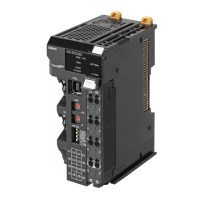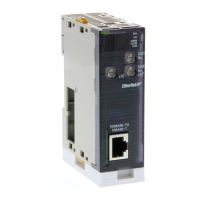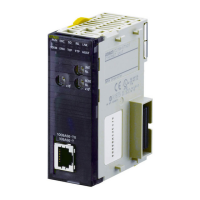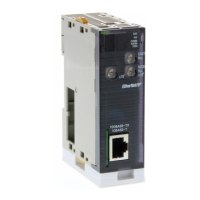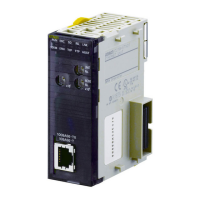23
Network Configuration Overview Section 2-1
Network with General-purpose Slaves and Environment-resistive Slaves Using Flat Cable
Network with General-purpose Slaves Using Special Thin Cable for Trunk Line and Flat Cable for
Branch Lines
Nodes There are two kinds of nodes in a DeviceNet Network: Slaves and Masters.
The Slaves connect to external I/O and the Masters manage the Network and
the external I/O of the Slaves.
Note The Master and Slaves can be connected at any location in the Network, as
shown in the preceding diagram.
Trunk/Branch Lines The trunk line refers to the cable that has Terminating Resistors on both ends.
NodeNode Node
Communications
power supply
T-branch Connector
(Combination of
DCN4-TR4-1 and
DCN4-BR4)
T-branch Connector (branch Line)
(Combination of DCN4-TR4-1
and DCN4-BR4D)
Connectors for node
connections
(DCN4-SF4D)
Connectors for node connections
(DCN4-SF4D)
Connector with Terminating Resistance
(Combination of DCN4-TR4-1
and DCN4-TM4)
Environment-
resistive Slave
Thin cable
Branch
line
Trunk line
Flat Cable Power Supply Terminal
Block with Terminating Resistance
(DCN4-TP4D)
Node Node Node
Node
Node
Branch
line
Branch
line
Branch
line
Branch
line
T-branch
Tap
T-branch
Tap
T-branch
Tap
T-branch
Tap
Branch
line
T-branch
Tap
Trunk line Trunk line Trunk line
Trunk
line
Trunk
line
Trunk
line
Node Node
TT TT
MM
T
Use Special
Flat Cable.
Connect terminators at both
ends of the trunk line.
Power Supply Tap
or T-branch Tap
24 VDC
Connect terminators at both
ends of the trunk line.
T: T-branch connection
M: Multi-drop connection
Trunk line: Use Special Thin Cable.
Branch lines: Use Special Flat Cable.
Flat Cable Connector: DCN4-SF4D
Node Connector: DCN4-SF4D
Ground to
100 Ω or less.
Flat Cable Connector:
DCN4-SF4D
Connectors for node
connections
(DCN4-SF4D)
T-branch
Connector
(branch line)
(Combination of
DCN4-TR4-1 and
DCN4-BR4)
Node
Node
Node
Communications
power supply
Use Special Thin
Cable.
Terminator
Terminator

